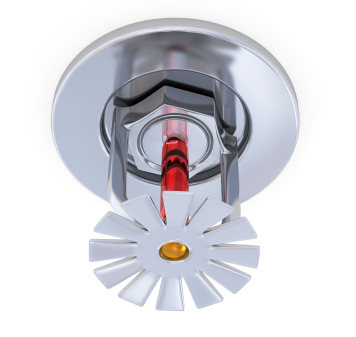
Fire sprinkler systems are often the unsung heroes of building safety. Quietly installed above ceiling tiles or out of sight in industrial facilities, these systems are your first line of defense in the event of a fire. However, their effectiveness depends heavily on how well they are maintained. Routine fire sprinkler inspection and testing isn’t just recommended—it’s essential. Without consistent care, the very system designed to save lives and protect property could fail when you need it most.
What Fire Sprinkler Inspections Involve
A proper fire sprinkler inspection is more than a quick glance at the ceiling. It’s a systematic evaluation of all parts of the sprinkler system—from control valves to sprinkler heads and water pressure gauges. Professionals check for obstructions, corrosion, leaks, and valve positioning. In addition, they verify that nothing has changed in the building’s layout that might impact sprinkler coverage.
Per NFPA 25 standards, which are widely adopted across the U.S., different components require inspection at varying intervals—some monthly, some annually, and some even more frequently if the building has high-risk areas.
Why Routine Testing Is Just as Important
Testing ensures that your system doesn’t just look functional—it works under pressure. During testing, professionals simulate real-world fire conditions to assess water flow, check alarm signals, and measure pressure in the system. These tests confirm that valves open properly, water discharges where it should, and alarms activate immediately.
Failure to test your sprinkler system can lead to undetected mechanical issues that only become apparent when it’s too late. According to FEMA data, sprinkler systems operated in 91% of structure fires in which they were present—and they were effective in controlling the fire in 96% of those cases. However, when systems fail, it’s often because they were either turned off or not maintained.
Common Issues Found During Sprinkler Inspections
Fire sprinkler systems are exposed to many environmental factors that can compromise performance over time. Some common problems discovered during inspections include:
- Obstructed sprinkler heads (paint, dust, or items hung from them)
- Closed or improperly positioned valves
- Corroded piping or fittings
- Pressure imbalances
- Blocked or malfunctioning water flow switches
Neglecting these issues can result in a compromised response time—or complete failure to activate—during an emergency.
Inspection Frequency: What’s Required?
The frequency of inspections varies depending on the type of building and system, but a general guideline includes:
- Weekly/Monthly: Gauges, control valves, and system air pressure (in dry systems)
- Quarterly: Alarm devices, valve supervisory switches, and water flow alarms
- Annually: Full system check, sprinkler heads, and signage
- 5-Year Intervals: Internal piping inspection, valve replacement, and obstruction tests
Keeping up with this schedule ensures you’re compliant with national standards and local codes while maximizing the life and reliability of your system.
Benefits Beyond Compliance
While staying compliant with fire codes is a top reason to schedule routine inspections, there are other benefits as well. A well-maintained sprinkler system can reduce your insurance premiums and protect your assets by minimizing damage in the event of a fire. Additionally, a functional system provides peace of mind to building occupants, whether it’s employees in an office, patients in a hospital, or residents in an apartment complex.
Professionally maintained systems also hold their value better. Over time, corrosion and buildup can reduce the efficiency of a system. Early detection through routine testing can prevent costly replacements and keep your infrastructure sound.
Do DIY Visual Checks Help?
Some facility managers may attempt to do basic visual inspections themselves, and while this can help identify surface-level issues, it’s not a substitute for professional servicing. Internal pipe scaling, valve timing issues, and gauge malfunctions are just a few examples of problems only trained technicians can detect.
Attempting to test or repair a fire sprinkler system without proper training can result in accidental discharge, property damage, or, worse, system disablement without realizing it.
Professional Records for Legal Protection
When you hire a licensed company for fire sprinkler inspection and testing, you also receive proper documentation. This can be critical in the event of a fire-related insurance claim or a dispute with code enforcement. These inspection reports serve as proof of compliance and due diligence, shielding you from liability in the aftermath of an incident.
Cal-Counties Fire Protection – Fire Sprinkler Services in the Inland Empire
Your sprinkler system is a silent guardian—until the day you need it. And when that day comes, it should perform without hesitation. Cal-Counties Fire Protection provides thorough, code-compliant fire sprinkler inspections and testing across the Inland Empire. Whether you manage a commercial building, school, or healthcare facility, we ensure your fire protection system is ready to act, so you don’t have to second-guess your safety strategy.
